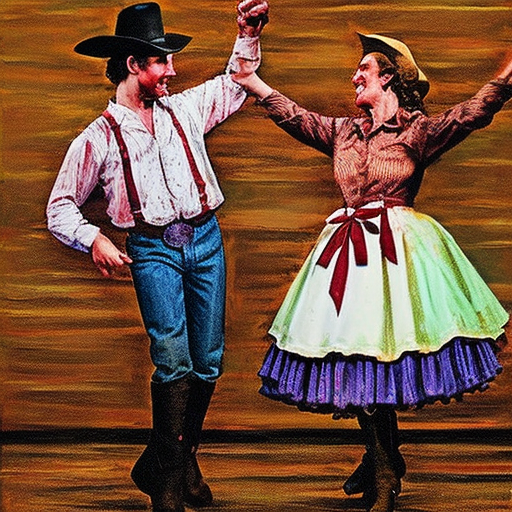Square Dance: A Traditional American Folk Dance
Square dance is a traditional American folk dance that originated in the early 19th century. It is a social dance form that involves four couples arranged in a square formation, hence the name. The dance is characterized by intricate footwork, lively music, and calls from a caller who directs the dancers throughout the dance.
History and Origins
Square dance has its roots in various European folk dances, such as the English country dance, French quadrille, and Scottish country dance. These dances were brought to America by European immigrants and settlers in the 17th and 18th centuries. Over time, these dances merged and evolved to create the unique American square dance.
The popularity of square dance grew rapidly in the 19th century, particularly in rural communities. It became a popular form of entertainment at social gatherings, barn raisings, and community events. Square dance was not only a way to socialize but also a means of preserving cultural traditions and passing them down through generations.
Structure and Movements
Square dance is typically performed to lively fiddle or string band music. The dance is structured in a series of movements, with each movement consisting of a set of choreographed steps. The caller, who stands outside the square, calls out the steps and sequences in real-time, guiding the dancers through the dance.
The basic movements in square dance include promenade, do-si-do, allemande left, swing, and dosado. These movements are combined in various patterns and formations, creating a rich and dynamic dance experience. The dancers interact with their partner and other couples in the square, executing the movements in synchrony.
Traditional and Modern Variations
Square dance has evolved over time, giving rise to different regional styles and variations. Traditional square dance styles include Appalachian, New England, and Southern styles, each with its own unique steps, music, and cultural influences. These traditional styles are still practiced today, preserving the historical and cultural significance of square dance.
In addition to the traditional styles, modern square dance has emerged as a popular recreational activity. Modern square dance incorporates elements of traditional square dance but also introduces new movements and choreography. It is often performed to a wider range of music genres, including pop, rock, and country.
Square Dance in Popular Culture
Square dance has had a significant impact on American popular culture. It has been featured in numerous movies, television shows, and music videos, showcasing its energetic and lively nature. Square dance has also influenced other dance forms, such as line dancing and contra dance.
Square dance is not only a form of entertainment but also a community-building activity. It brings people together, fostering social interaction and creating a sense of belonging. Square dance clubs and organizations exist across the United States, providing opportunities for people of all ages to learn and participate in this vibrant dance form.
Conclusion
Square dance is a traditional American folk dance that has deep historical and cultural roots. It has evolved over time, encompassing various regional styles and modern variations. Square dance continues to be a popular form of entertainment and a means of preserving cultural traditions. Whether performed in traditional or modern styles, square dance remains a lively and engaging dance form that brings people together.












